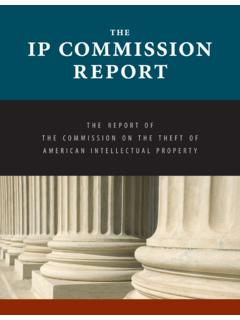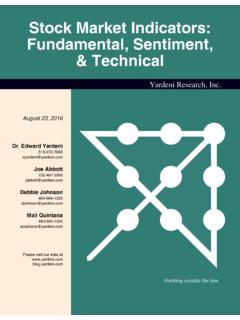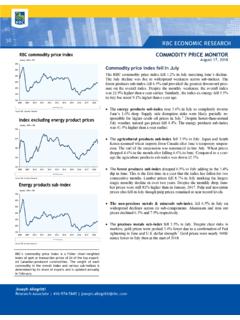Transcription of RESEARCH REPORT 152 - Health and Safety Executive
1 HSE Health & Safety Executive Assessment of benefits of fire compartmentation in chemical warehouses Prepared by WS Atkins Consultants Ltd for the Health and Safety Executive 2003 RESEARCH REPORT 152 HSE Health & Safety Executive Assessment of benefits of fire compartmentation in chemical warehouses RC Houlding, PJ Rew WS Atkins Consultants Ltd Woodcote Grove Ashley Road Epsom Surrey KT18 5BW Currently, specific advice for the design of fire protection in chemical warehouses is lacking particularly with regard to the limitation of off-site hazards. This REPORT considers the benefit of various compartment wall options in mitigating against fire hazards and their cost-effectiveness in relation to other fire protection measures.
2 A model has been developed for assessing the risk reduction derived from, and costs associated with, the installation of fire protection measures in chemical warehouses. The model considers the relative benefit of fire protection measures in limiting fire spread through output of a damage area- fire frequency product. The damage area is considered to correlate well with the severity of offsite effects such as the production of smoke plumes and fire water run-off. The model is essentially probabilistic but includes simple deterministic assessment of fire growth, fire spread across separation and withstand duration for fire compartment components.
3 In the development and testing of the model, various model uncertainties and weaknesses were identified, many of which could be rectified through further development of the model. Potential key areas for model improvement are listed in the REPORT . In addition to the development of the risk model, a detailed deterministic assessment was undertaken of missile and blast effects on compartmentation from the sudden failure of metal drums containing liquid fuels. The REPORT provides the results of this assessment for a reinforced concrete wall, a blockwork wall and a plasterboard stud partition. This REPORT and the work it describes were funded by the Health and Safety Executive (HSE).
4 Its contents, including any opinions and/or conclusions expressed, are those of the authors alone and do not necessarily reflect HSE policy. HSE BOOKS Crown copyright 2003 First published 2003 ISBN 0 7176 2744 6 All rights reserved. No part of this publication may be reproduced, stored in a retrieval system, or transmitted in any form or by any means (electronic, mechanical, photocopying, recording or otherwise) without the prior written permission of the copyright owner. Applications for reproduction should be made in writing to: Licensing Division, Her Majesty's Stationery Office, St Clements House, 2-16 Colegate, Norwich NR3 1BQ or by e-mail to ii CONTENTS 1.
5 2 Background .. 2 Objectives .. 2 Scope of work .. 2 2. REVIEW OF CURRENT LEGISLATION AND GUIDANCE .. 4 4 UK guidance .. 4 Building LPC Design Guide for the fire Protection of Buildings .. 5 Health and Safety Executive 6 US guidance .. 6 NFPA Occupational Safety and Health 8 Australian guidance .. 9 New Zealand 9 European 10 Recommendations for fire Protection of Stores Containing Hazardous Substances .. 10 Technical rules for dangerous goods TRGS 515 (Germany).. 11 Toxic Storage Facilities TRGS 514 (Germany).. 12 Guidelines for retention of fire water run-off (Germany).. 13 3. MODEL 15 Model background.
6 15 Model structure .. 15 fire source and storage 17 Compartment wall options .. 19 fire 19 fire withstand of compartment 20 fire segregation and separation .. 21 Impact of sudden failure of 22 4. PROBABILITY DATA FOR fire PROTECTION MEASURES .. 24 24 Detection .. 24 Automatic fire suppression ..27 Manual 29 Early failure of fire 29 fire compartment withstand and fire Brigade intervention .. 33 5. COSTS ASSOCIATED WITH fire PREVENTION MEASURES .. 36 Assumptions made in defining 36 Cost options for highly inflammable/hazardous liquid storage facility .. 36 Cost estimates used in model .. 37 6. MODEL TESTING.
7 40 Model implementation .. 40 Scenario 1 Existing chemical 40 Scenario 2 Modern 41 Sensitivity of model results to choice of probabilities for sudden burst of containers .. 44 7. CONCLUSIONS .. 46 Review of current legislation and guidance .. 46 Model development .. 46 Model testing .. 47 Modelling uncertainties and further development .. 47 REFERENCES .. 49 APPENDIX A Impact of Sudden Failure of Container on Compartment Wall WSA CL3012/003 1 1. INTRODUCTION Background This study concerns the fire protection measures that can be applied to chemical warehouse storage. As discussed by Tyldesley [1], fire hazards from pesticide warehouses have been the topic of much RESEARCH , because they are subject to major hazard legislation in Europe.
8 However, while experience has shown that fires in non-pesticide chemical warehouses are also a concern, specific advice for the design of such warehouses is lacking, particularly with regard to the minimisation of off-site hazards, such as the effects of dispersion of smoke. This REPORT discusses the benefit of various compartment wall options in mitigating fire hazards. It then describes the development of a model for comparing the risk reduction resulting from the installation of different fire protection measures within a chemical warehouse site. Objectives The following summarises the objectives defined for this study: 1) To review current legislation and guidance on the design of warehouses for storage of dangerous goods, with particular attention to compartmentation requirements, in respect of the storage of different types of materials, and overall size limitations of compartments.
9 2) To assess the costs associated with compartmentation , and to compare these with alternative risk reduction measures that could be usefully applied for dangerous goods stores. 3) To assess the ability of different types of compartment wall of a 1 hour standard to withstand impact by small containers or the pressure pulse associated with the sudden failure of small containers in a fire situation. Construction methods considered are reinforced concrete, brickwork/blockwork, plaster or mineral insulation board on a suitable metal or timber frame. 4) To assess the benefits arising from compartmentation and alternative risk reduction measures, in terms of maximum size of likely fire , numbers of people at risk, probability of fire spread to adjacent outdoor storage, chemical process plant or off-site.
10 5) To produce a risk assessment model drawing together relationships between costs and benefits, and providing a means by which an informed selection between types of fire protection for the design of a new warehouse may be made. 6) To apply the model to selected scenarios, as a check on its practicality, consistency and usefulness. Scope of work The review of current legislation and guidance covers building regulations and guidance in the UK (England and Wales and Scotland), and 4 other countries drawn from Europe/North America/Australia/New Zealand. The types of hazardous incidents considered in the risk assessment model include a fire starting inside a warehouse and a fire starting in open air chemical storage close to the warehouse.
















